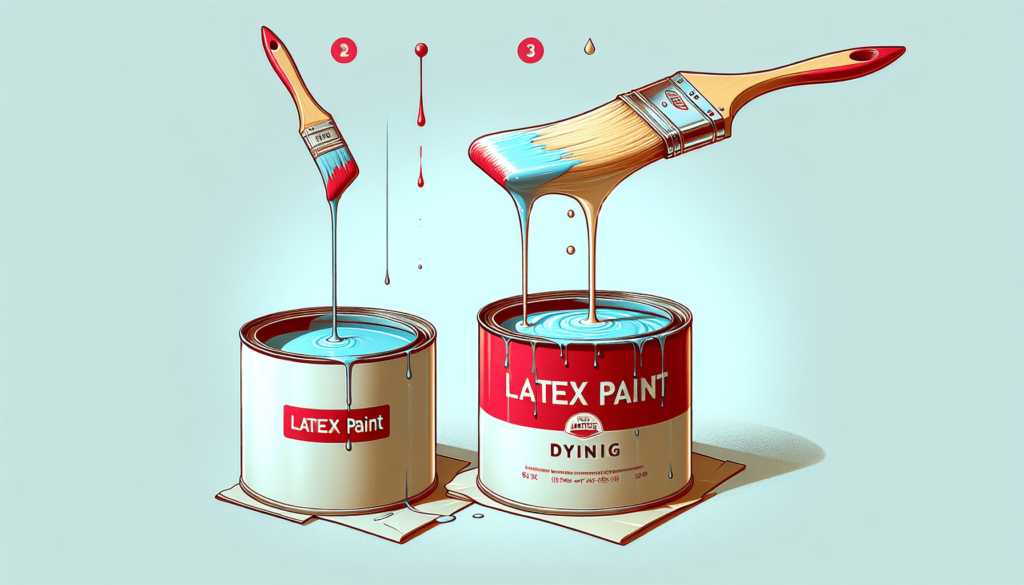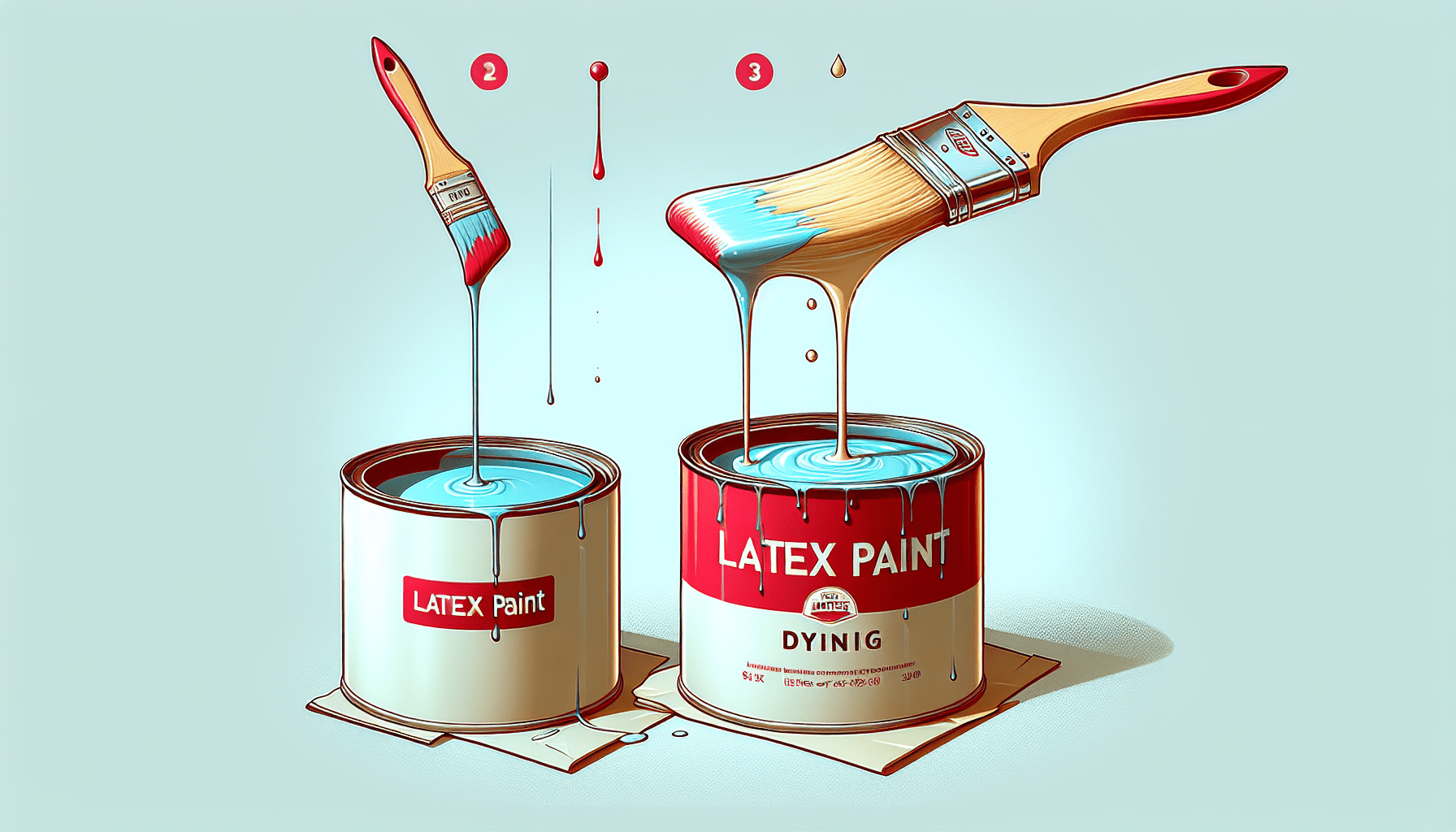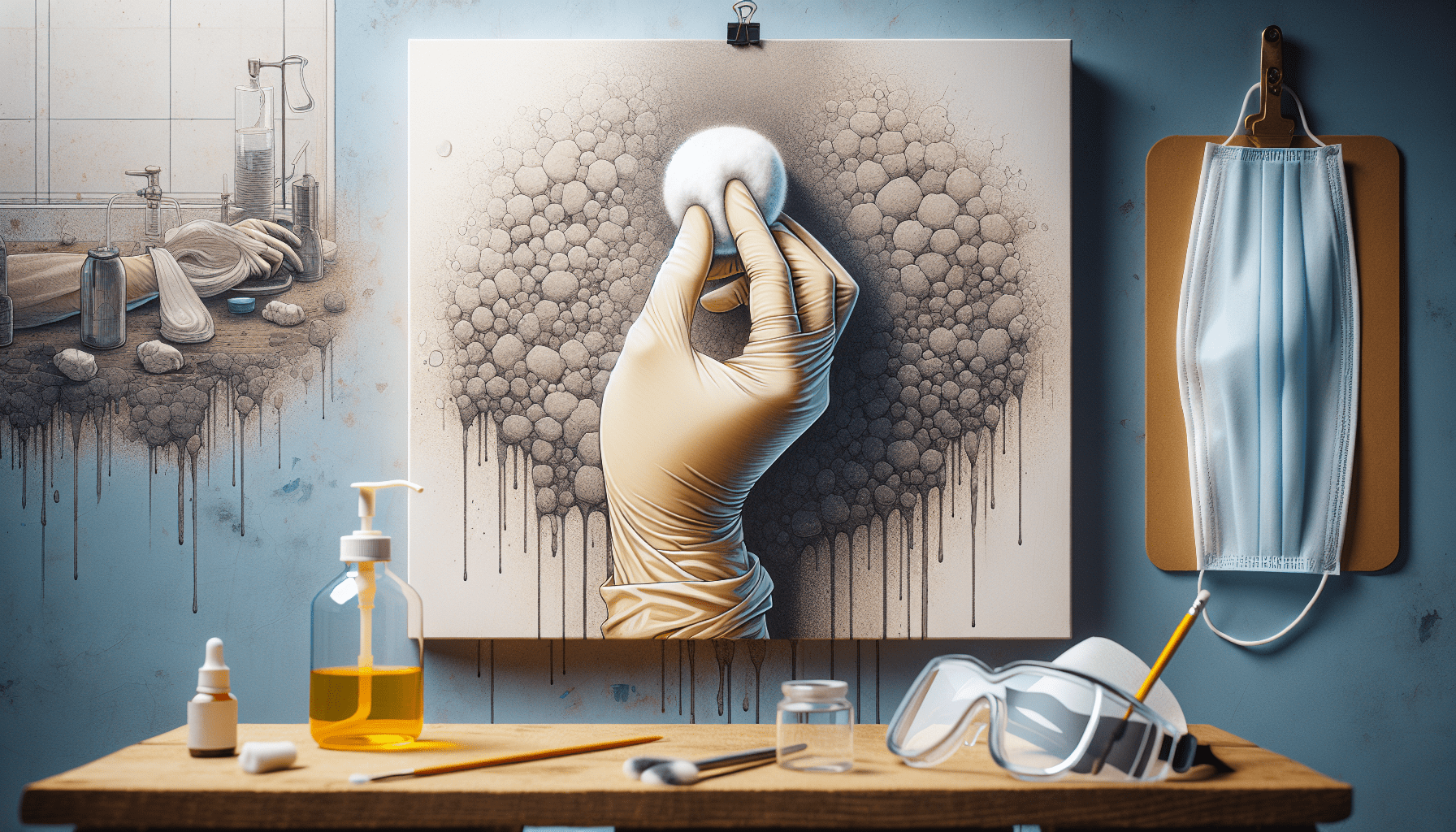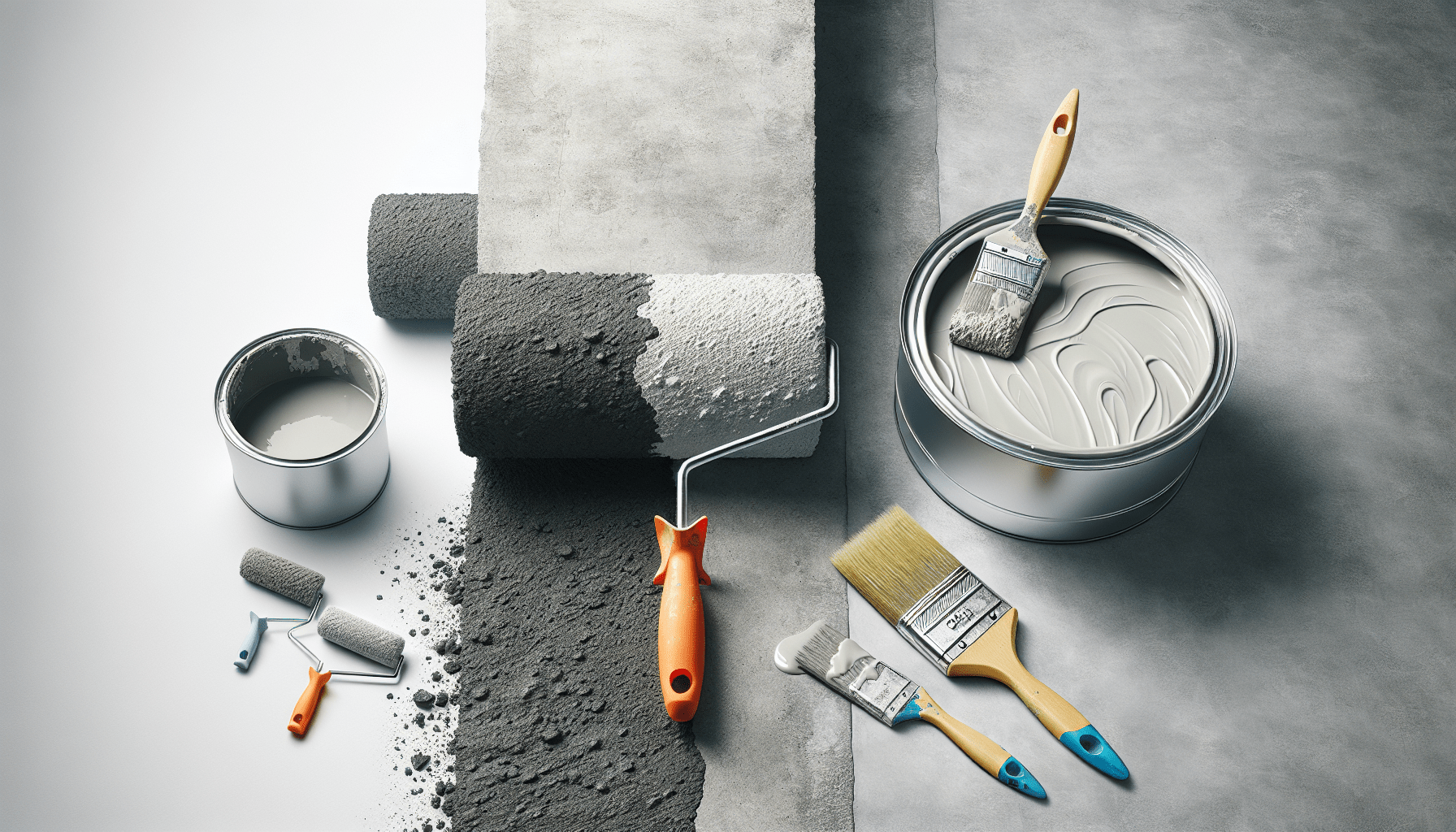In order to properly dry latex paint, certain precautions and techniques must be followed to ensure optimal results. This article aims to provide you with a concise and informative guide on how to effectively dry latex paint, offering practical tips and step-by-step instructions. By following these guidelines, you can achieve a smooth and durable finish, while also extending the longevity of your painted surfaces. So, let us proceed to explore the necessary measures to take when drying latex paint.

Prepare the Painting Area
Before you start drying your latex paint, it is essential to properly prepare the painting area. This will ensure that the drying process goes smoothly and efficiently.
Remove furniture and other items
First, remove any furniture or other items from the area where the paint is drying. This will give you ample space to move around and prevent any accidental damage to your belongings.
Cover floors and surfaces
Next, cover the floors and any surfaces that are not being painted with drop cloths or plastic sheets. This will protect them from any potential spills or splatters while you are drying the paint.
Open windows and provide ventilation
Lastly, open the windows in the painting area to allow for proper ventilation. This will help to circulate the air and speed up the drying process. Additionally, you can use fans to further enhance the airflow in the room.
Dry Naturally
The most common and straightforward method of drying latex paint is to let it air dry naturally. This can be done by simply leaving the painted surface untouched for a specific period of time.
Allow paint to air dry
To air dry latex paint, ensure that the painted area is undisturbed and do not touch or apply any additional heat to it. Depending on the temperature and humidity levels, latex paint can take anywhere from a few hours to a few days to dry completely.
Use fans to speed up drying process
If you want to speed up the drying process and achieve faster results, you can use fans to increase the airflow in the room. Position the fans in such a way that they are directly blowing air towards the painted surface. This will help to evaporate the moisture in the paint and accelerate the drying time.
Use Heat Sources
If you need to dry latex paint quickly, you can use heat sources to expedite the process. However, it is important to exercise caution and follow these guidelines to prevent any damage.
Use hairdryer on low heat setting
One of the most accessible heat sources to dry wet paint is a hairdryer. Set the hairdryer to the lowest heat setting and hold it a few inches away from the painted surface. Move the hairdryer back and forth, continuously, to evenly distribute the heat. Be cautious not to use excessive heat, as it can cause the paint to bubble or crack.
Place heater near painted surface
Another heat source you can utilize is a heater. Position a heater near the painted surface and set it to a low heat level. Ensure that the heater is not too close to the paint, as it can cause damage. Similar to using a hairdryer, the heat from the heater will facilitate the drying process.
Apply Absorbent Materials
If you are dealing with a small spill or a small area of wet paint, applying absorbent materials can help absorb the moisture and speed up the drying time.
Sprinkle baking soda or kitty litter on wet paint
One effective method is to sprinkle baking soda or kitty litter directly onto the wet paint. Spread it evenly over the surface, ensuring that the entire painted area is covered.
Let it sit and absorb the moisture
Allow the baking soda or kitty litter to sit undisturbed on the wet paint for a few hours. The absorbent properties of these materials will draw out the moisture from the paint, aiding in the drying process.

Use Cat Litter
For larger areas of wet paint or spills, another effective option is to use cat litter. Follow these steps to properly dry the paint using cat litter.
Pour a thick layer of cat litter over the wet paint
Begin by pouring a thick layer of cat litter directly onto the wet paint. Ensure that the entire painted surface is covered with a sufficient amount of cat litter.
Gently press down litter with a board or large object
Once the cat litter has been spread evenly over the wet paint, gently press it down using a board or a large object. This will help the litter to better absorb the moisture from the paint.
Wait for the paint to dry and then scoop away the litter
Allow the paint to dry completely before removing the cat litter. Depending on the size of the area and the humidity levels, this can take anywhere from a few hours to a couple of days. Once the paint is dry, carefully scoop away the cat litter using a dustpan and brush, or a vacuum cleaner if the litter is loose and easy to remove.
Try Commercial Paint Drying Aids
In addition to the aforementioned methods, there are also commercial paint drying aids available in the market that can help expedite the drying process of latex paint.
Use paint drying additives or accelerators
Paint drying additives or accelerators are specifically designed to speed up the drying time of latex paint. These products typically contain chemicals that promote quick evaporation of the moisture in the paint.
Follow manufacturer’s instructions for application
When using commercial paint drying aids, it is crucial to carefully read and follow the manufacturer’s instructions. The application process may vary depending on the product, so it is important to adhere to the recommended usage guidelines for optimal results.
Apply Heat Gun or Blow Torch
For larger areas of wet paint or if you need to dry the paint quickly, you can use a heat gun or a blow torch. However, caution must be exercised as excessive heat can damage the painted surface.
Use heat gun or blow torch at a safe distance
When using a heat gun or blow torch to dry wet paint, ensure that you maintain a safe distance between the heat source and the painted surface. This will prevent any scorching or blistering of the paint.
Move back and forth to evenly distribute heat
Keep the heat gun or blow torch in constant motion, moving back and forth over the painted surface. This will help to evenly distribute the heat and prevent any localized overheating, which could potentially damage the paint.
Avoid excessive heat to prevent damage to surface or paint
It is crucial to avoid applying excessive heat when using a heat gun or blow torch. The goal is to gently dry the paint without causing any harm to the painted surface or the paint itself. If you notice any signs of the paint bubbling or blistering, immediately stop the heat application.
Consider Professional Paint Drying Equipment
If you frequently deal with wet paint or need to dry large areas quickly, it may be beneficial to consider investing in or renting professional paint drying equipment.
Rent or purchase industrial paint drying fans or machines
Industrial paint drying fans or machines are specifically designed to dry paint quickly and efficiently. These powerful devices can significantly reduce drying time, making them ideal for larger projects or professional use.
These can significantly speed up the drying process
Professional paint drying equipment utilizes advanced technology to maximize airflow and evaporation, resulting in reduced drying times. These machines are designed to handle large areas and are particularly useful in high-volume painting projects.
Avoid High Humidity or Cold Temperatures
To ensure the most effective drying process, it is crucial to avoid high humidity or cold temperatures when drying latex paint.
Avoid painting in humid conditions or low temperatures
High humidity can slow down the drying process of latex paint, while low temperatures can prevent the paint from drying altogether. It is best to paint when the humidity levels are low and the ambient temperature is within the recommended range specified by the paint manufacturer.
Ensure proper room temperature and humidity levels for effective drying
To create an optimal environment for drying latex paint, ensure that the room temperature is between 50°F and 85°F (10°C and 29°C) and the humidity levels are below 50%. Using a dehumidifier can help control the humidity in the room, especially if you are painting in a naturally humid environment.
Touch Test and Reapply if Necessary
After employing various drying methods, it is important to perform a touch test to assess the dryness of the paint.
Gently touch the paint surface to check for dryness
Using clean, dry fingers, gently touch the painted surface to assess its dryness. If the paint feels tacky or soft, it is an indication that it has not dried completely.
If paint still feels tacky or soft, reapply drying methods
If the paint fails the touch test, it may require additional drying. You can repeat the chosen drying methods or try a different approach to ensure the paint dries thoroughly.
In conclusion, drying latex paint effectively involves proper preparation of the painting area, choosing appropriate drying methods based on the size and condition of the painted surface, and maintaining optimal temperature and humidity levels. By following these guidelines, you can ensure that your latex paint dries efficiently and results in a smooth finish.



